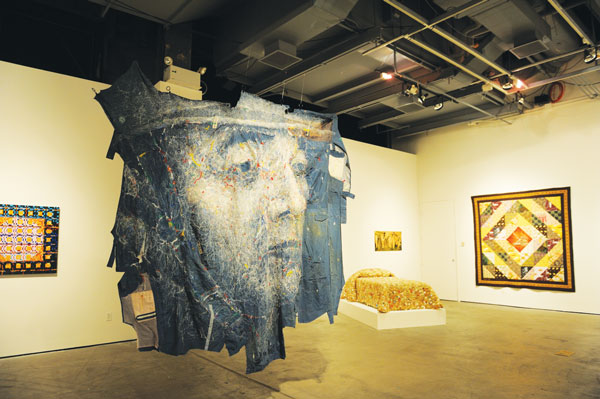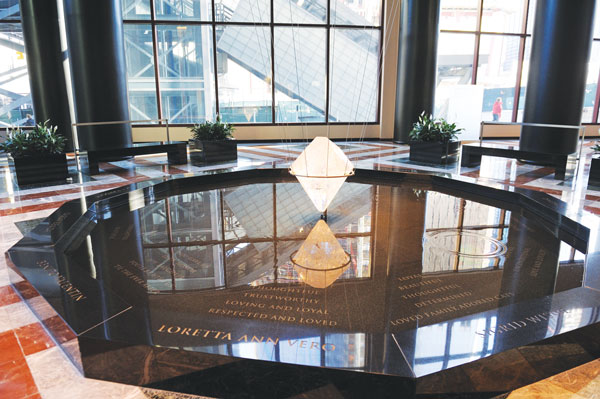C.B. 1’s Housing Committee:
Community Board 1’s Housing Committee is only four months old, but they have been a busy four months. The group that is now officially recognized as a C.B. 1 committee actually started its work four years ago with the preparation of a guide to rent stabilized housing in Lower Manhattan. That document was followed by one entitled “Seniors’ Guide to Lower Manhattan” and this past summer, by a guide to affordable housing. The guide for seniors is currently being updated. The rent-stabilization guide was recently updated and has just been re-released.
“There are over a 1,000 more rent stabilized apartments in Lower Manhattan than there were a year and a half ago,” said Housing Committee chair Tom Goodkind at the most recent Community Board 1 full board meeting on Dec. 21. Goodkind emphasized that “rent stabilized” is not the same thing as “affordable.” Some of the rent stabilized apartments have hefty rents but they can only be increased by amounts voted annually by the New York City Rent Guidelines Board.
The Community Board 1 listings include buildings with more than 40 units. Among the Battery Park City buildings listed as rent stabilized are Liberty Luxe and Liberty Green on North End Avenue, where studios start at $3,700 a month. Elsewhere in Lower Manhattan, New York by Gehry at 8 Spruce St. is also rent stabilized, according to the C.B. 1 guide. These three buildings and several others on the C.B. 1 list received Liberty Bond financing, which gives them tax abatements and makes them subject to rent stabilization as long as the tax abatements are in effect.
“We’re the only Community Board that does this [prepare a list of rent stabilized apartments],” said Goodkind.
The Housing Committee is also moving ahead on organizing services for seniors in the community that will allow them to age in place. “We’re continuing with the 501(c) 3 business plan for Manhattan Seniors,” Goodkind said at the C.B. 1 full board meeting. He mentioned that Manhattan Youth was founded by Community Board 1, which brought Bob Townley on board to run it. “We’re hoping to do the same for the latter part of life and provide a business plan where we can give services to the seniors in our area so they can stay here affordably,” Goodkind said. “We’re getting assistance from professionals in the field.”
 [/media-credit]
[/media-credit]
- “Crossing LInes: The Many Faces of Fiber” is a juried exhibit of 58 textile works in the Courtyard Gallery of 3 World Financial Center through Feb. 19, 2012.
Fiber art exhibit at the World Financial Center:
Textiles, rag paper, pipe cleaners, plastic mesh, crocheted metal wire and other materials are transformed into provocative sculptures and wall hangings in a juried exhibit called “Crossing Lines: The Many Faces of Fiber” at the Courtyard Gallery in the World Financial Center through Feb. 19, 2012.
Some of the objects are beautiful such as Nancy Koenigsberg’s shimmering “Morning Light,” made of coated copper wire and glass beads, or Saaraliisa Ylitalo’s “Altar and Offerings,” with a gold screen that hovers over silk and wire bowls, embellished with gold leaf. Others are disturbing. A bed whose coverlet by Ruth Tabancay is stitched with tea bags (“Extending the Useful Life” is the name of the work) could not afford much rest, especially when flanked by a hand-dyed, quilted wall hanging, “All that Glitters” by Elizabeth Barton, depicting oil wells like dinosaurs dipping their greedy maws earthward. Another quilted piece, “Conventional Forces,” by Katherine Knauer, showing soldiers, war and the tools of war hangs on a neighboring wall. Still other works in the show impress with their craftsmanship and their wit.
The exhibit celebrates the 35th anniversary of the Textile Study Group of New York, a not-for-profit organization founded to promote the fiber arts. It was curated by Rebecca A. T. Stevens, Consulting Curator of Contemporary Textiles at the Textile Museum in Washington, D.C.
“Crossing Lines” is part of the cultural programming sponsored by Brookfield Properties, which owns the World Financial Center complex. The exhibit is open from noon to 4 p.m., Tuesdays through Sundays. Admission is free.
 [/media-credit]
[/media-credit]
- A memorial to the 11 American Express employees who died on 9/11 is in the lobby of 3 World Financial Center. Like the larger memorial across the street, the American Express memorial utilizes water and engraved stone.
Another 9/11 memorial:
The National September 11 Memorial has gotten a lot of attention, but directly across from it, at 3 World Financial Center, is another 9/11 memorial to 11 American Express employees that fewer people may have noticed because it’s in a quiet part of the lobby, away from the building entrance and the through traffic. Like its larger and more famous neighbor, it utilizes water, granite, greenery and benches to create a solemn space for reflection. The memorial, designed by Ken Smith, is centered by an illuminated quartz crystal suspended over a black, 11-sided pool on which the names of those who died have been etched. Next to each person’s name are some things that their families remembered about them and nearby is a plaque with photos and accounts of the deceased, all of whom worked as travel counselors to Marsh & McLennan on the 94th floor of One World Trade Center. Eleven drops of water fall at random intervals into the pool, rippling the surface and expressing what cannot be adequately expressed in words or forgotten, no matter how many years come and go.
To comment on Battery Park City Beat or to suggest article ideas, email TereseLoeb@mac.com.
































